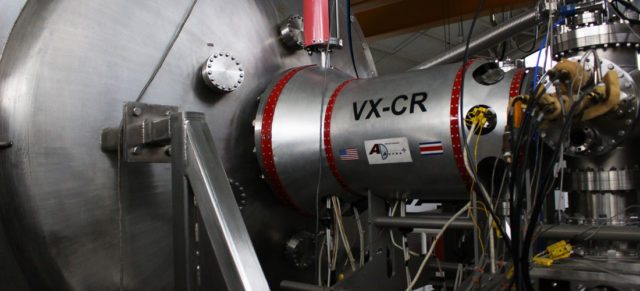The plasma engine of former Costa Rican astronaut Franklin Chang Díaz is close to knowing the design of the vehicle that will take him to space if he passes a test of the National Aeronautics and Space Administration (NASA) it involves its uninterrupted operation for 100 hours.
The morning of this Friday in the program Our Voice, the director of operations of Ad Astra Rocket for Costa Rica, Juan Ignacio Del Valle Gamboa, announced that the project led from the branch of the company in Houston, United States, is close to concluding a process that began in 2015 when the American agency granted them a contract to develop the last experimental engineering tests that represent level 5 -of 9- on the scale known as the maturity of the technology.
“In this final test, that our company is in these precise moments executing and trying to conclude by the end of the year, we will operate the experimental plasma engine that is in our laboratory in the United States for 100 continuous hours”, mentioned the mechanical engineer.

“When this milestone is certified and another series of technical aspects that are in the contract certifies that our company has managed to take the technology to that level 5. What is important about this? That the next level, the 6, is already in for the first time, the construction of the prototype vehicle that will eventually take it to space”, he added.
This would be the first time in 40 years that the initiative -13 to take place in Ad Astra and 3 since its relationship with NASA- is on the verge of manufacturing a flight model, which would be tested in the ground laboratory and, in case of receiving the approval, it would go to level seven, which is its placement in space. “This is the milestone that our company has waited for years to initiate what we will consider as the commercial stage of applications of the plasma engine”, emphasized Del Valle.
During the first year, the company chaired by the Costa Rican scientist dedicated himself to equipping the experimental equipment of the laboratory in Houston. Among the tasks that were fulfilled in this first stage include the readjustment of vacuum chambers that simulate the conditions of space, the only place where the prototype of plasma works.
Control systems were also reconditioned and magnets, called superconducting magnets, which are important in the experimentation, were put back into operation. Additionally, the parts that make up the internal part of the plasma engine, known as “Rocket Core”, were designed and built. In the second year, the first preparation tests were carried out to make the prototype of the engine more sustained, going from milliseconds to an hour.
The economic contribution of NASA for the project is US$ 10 million, which has been delivered in tracts during the last 3 years of the contract and after constant review of results, according to schedule. The technology developed by Ad Astra Rocket will allow the transport of large loads in space economically and efficiently.
Some of the capabilities of the plasma engine are to keep space stations in orbit for the future development of more aeronautical projects.


